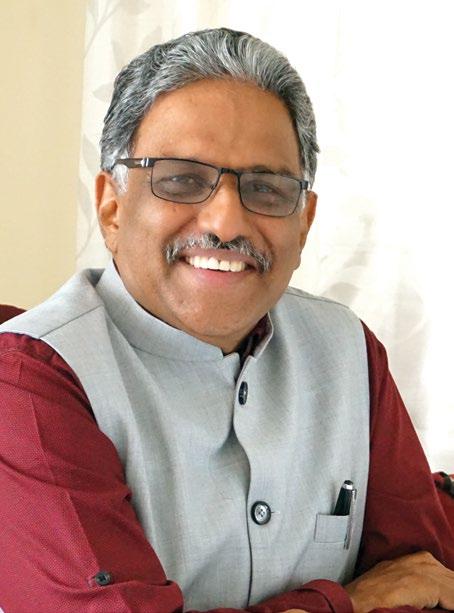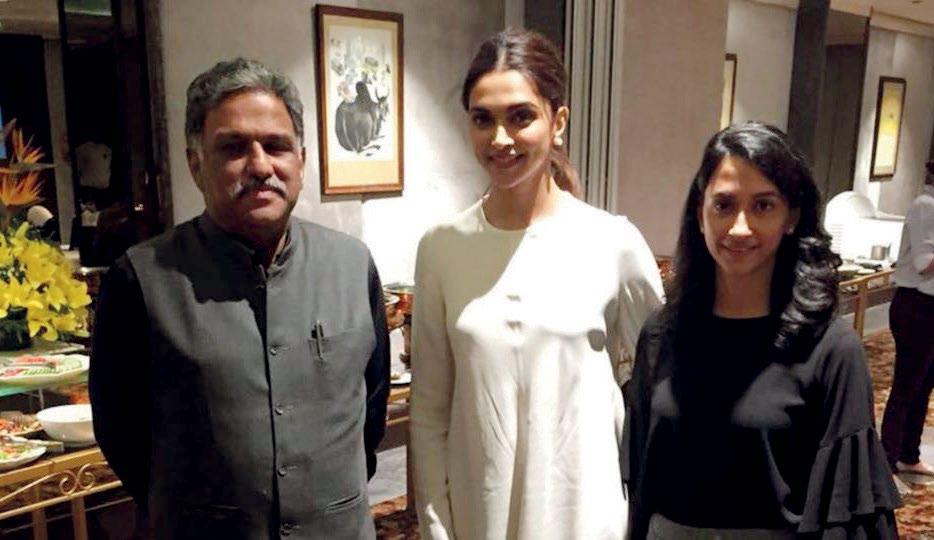
6 minute read
Dr Alexander Thomas
Guiding Healthcare Delivery Improvement Dr Alexander Thomas, Founder-Member and President, AHPI
Advertisement
DR. THOMAS has served the healthcare sector in India for over 30 years, and holds positions in several national associations: he is the Founder-Member and President of the Association of Healthcare Providers of India (AHPI), Founder-Member and President of the Association of National Board Accredited Institutions (ANBAI), Founder-President (2012-2017) and Patron of the Consortium of Accredited Healthcare Organizations (CAHO). In these roles, he has effected farreaching policy changes within the healthcare landscape, especially in the area of healthcare communication.
Dr. Thomas has played a significant role in bringing communication to the fore within the healthcare sector. His book Communicate. Care. Cure. A Guide to Healthcare Communication was first published in 2012, filling a niche in the healthcare industry that had long been empty. Before that, there was no single publication in India on the role of effective communication for patients, healthcare providers, and healthcare administrators. It has served as a guide to effective communication for healthcare professionals at all levels and shown the impact that communication can have on the quality of care provided by an institution. In 2013, this initiative was awarded the prestigious Quality Council of India (QCI) – DL Shah Award. Building on the success of the book, training workshops for healthcare communication have been conducted nationwide, igniting a dynamic communications movement that won the QCI – DL Shah Award for an unprecedented second consecutive time in 2014. Hundreds of trainers have reached thousands of healthcare professionals, benefitting millions of patients across India. Both the first and second editions of this book have sold thousands of copies, with the resulting communications movement drawing much-needed attention to the importance of healthcare communication. The third edition of the book was released in September 2019.
You’ve been Founder-Member and President of the Association of Healthcare Providers of India (AHPI) for 10 years. What first drew you to the association? After 4 decades of mission service ( including 9 years as CEO of Bangalore Baptist Hospital) I found myself wondering what I was going to do after I retired. Through my work I had experience the plight of healthcare providers first hand. I was also aware of the difficulties of the patients. At that time I had an urge to work for the people to make healthcare equitable. Working along with Industry leaders like Dr Giridhar Gyani, Dr Devi Shetty and Dr Prem Nair, we instituted an organization that would work towards healthy India, encompassing society, community and common man at grass root.
Thus, Association of Healthcare Providers, India (AHPI) was born. I am currently tPresident of the organization.For the past couple of years I have used my experiences to strengthen the organization that not only works for equitable healthcare but help providers bring in improvements to be able to serve patients better.
How has it contributed to your development as a healthcare leader? These past few years with AHPI, initially as Executive Director and now as President have greatly contributed to my development as a
healthcare leader. This opportunity has allowed us to create an uniformed voice for the industry. AHPI allowed us to bring all the healthcare providers under one umbrella.
Given your tenure, you’ve certainly witnessed changes in healthcare over the past decade. What are the most important changes, and how do you think they affect healthcare delivery today? The biggest change in the Indian healthcare today is thelaunch of Ayushman Bharat — PMJAY in 2018 (world’s largest government healthcare scheme), where 50 crore marginalised beneficiaries have an opportunity to get access to hospital care. So far, 8,000 private hospitals have joined the programme but bigger, multispecialty hospitals are yet to empanel.
The rates of different packages are under review and we have stressed on the importance of quality care and a neutral costing study to enumerate the rate. The government, through the NITI AAyog and the National Health Authority has been requested to review these rates as they are far short of even basic rates for quality and does not cover even the direct costs of the surgeries.
It is no surprise that the private health sector contributes around 70 per cent of all the hospitals and around 40 per cent of total hospital beds (PwC 2007) because the government spends 1.4 percent of GDP on healthcare. We need a leap in healthcare spending. Not only in creating infrastructures but also investing in workforce development. There is one government doctor for every 10,189 people in India, whereas the WHO recommendation is 1:1000. We need to develop a system that can focus on skilling and upgrading medical workforce. Here, again the private sector can play a vital role in the skill development of doctors, nurses and health workers.
Then, from a decade ago when doctors were highly respected, we have come to a stage where nursing homes, doctors and medical professionals are been attacked everyday both physically in their workplaces and also by the media. All in all they need a lot of empowerment to deal with the present situation.
The health care industry faces myriad challenges. What do you envision as long-term goals for the association in preparing hospitals to meet such challenges? At AHPI we aspire to actively work with the government, policy making institutions, various commissions and committees on proposed legislation, regulations and other reforms, which can enable healthcare providers to deliver affordable healthcare services. We engage with government and work together to provide a good environment so that ultimately quality affordable care is available and accessible to the common man.
We collaborated with the Indian Institute of Space Technology and the Indian Institute of Science to introduce a course on technology for medical professionals to better equip them to serve the patients.
We also encouraged continuous development of medical professionals by disseminating courses and training its members in various skills through conferences, workshops and seminars
Since 3 years, AHPI has been liasoning with the Central Govt for the CGHS and ECHS empaneled hospitals, however the response was not very encouraging. Recently the IMA joined hands with AHPI in addressing the issue. As a result of this concerted effort, the Central Govt has released a sum of Rs.1000 crore towards clearing of CGHS backlog and another Rs. 1300 crore towards ECHS.
What do you see as the association’s primary objectives over the next year? We should expand our impact through affiliations with other nationally recognized organizations who are willing to partner with us to work toward equitable healthcare. In this regard, AHPI has strategic partnerships with national organisations like the Public Health Foundation of India (PHFI), IMA Consortium of Accredited Healthcare Organisations (CAHO), Association of National Board Accredited Institutions ( ANBAI), and NATHEALTH . We also work with regional organisations in each region like FHAK and PHANA in Karnataka
We should expand our outreach to nonmedical organizations who are willing to partner with AHPI to train its members on ethical standards, healthcare service delivery, innovative medical technology and applied research for the betterment of patient safety and community wellbeing. We work with apex bodies like the Indian Space Research Organisation (ISRO), National Law School of India University (NLSIU), IISC, IIMB, XIME etc to reach these goals.
We will also work closely with the key stake holders i.e. the Government and the Society to realise the universal health coverage – Ayushman Bharat.






